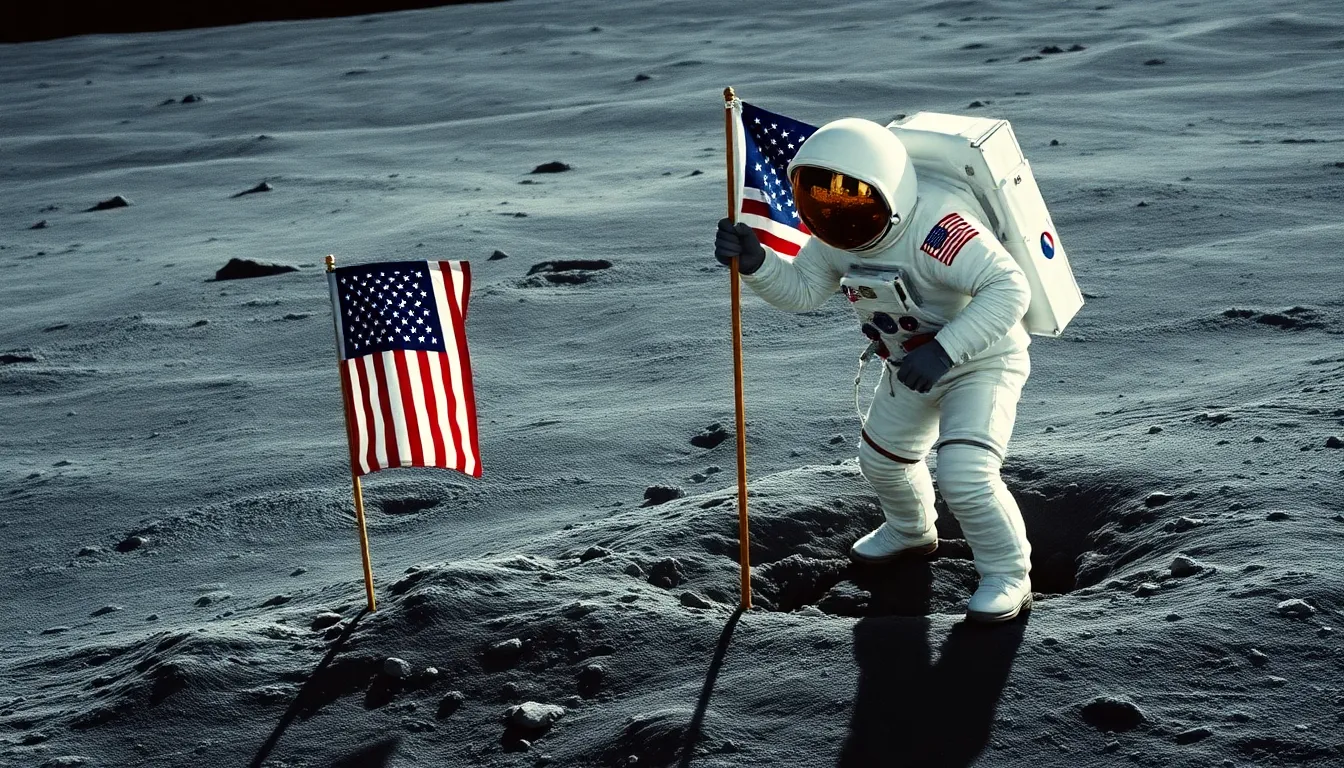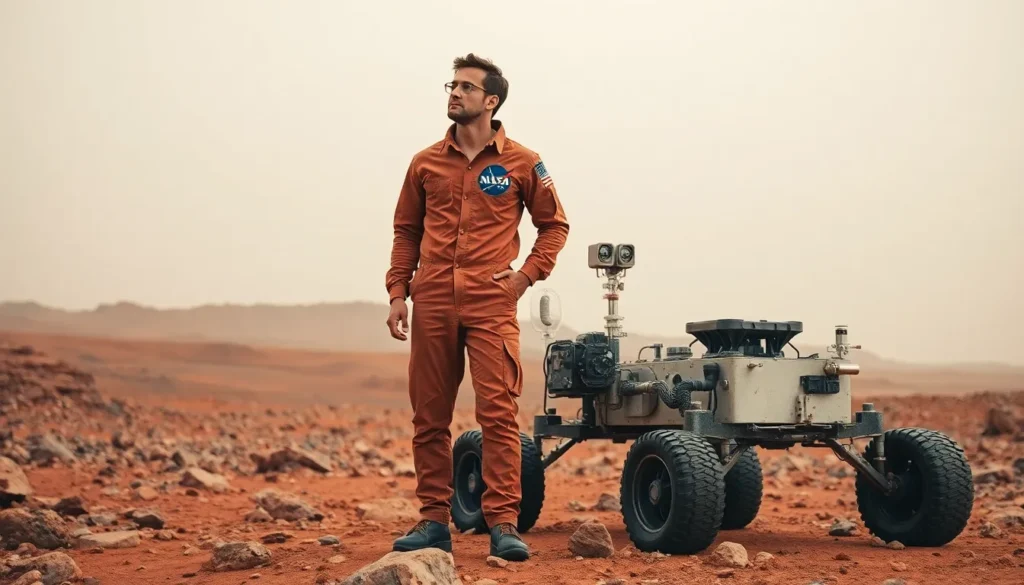Table of Contents
ToggleSpace missions are like the ultimate road trips but with a lot more math and a lot less gas station coffee. As humanity reaches for the stars, these ambitious projects not only push the boundaries of technology but also ignite our collective imagination. From landing rovers on Mars to sending probes to the outer edges of our solar system, each mission brings us closer to understanding the cosmos and our place in it.
Overview of Space Missions Projects
Space missions represent significant achievements in human exploration and scientific discovery. These projects often involve intricate planning and advanced technologies to achieve objectives beyond Earth’s atmosphere. Notable missions include the Mars rovers, which conduct extensive geological analysis and search for signs of past life.
NASA’s Artemis program aims to return humans to the Moon by 2024, laying groundwork for future Mars exploration. The mission seeks to enhance lunar science while testing new technologies for long-duration space travel.
European Space Agency’s Rosetta mission successfully orbited and landed on Comet 67P/Churyumov-Gerasimenko in 2014. This landmark achievement marked the first time a spacecraft landed on a comet, providing invaluable data on its composition and behavior.
SpaceX’s Crew Dragon program introduced commercially operated crewed flights to the International Space Station (ISS). These missions demonstrate the viability of private sector partnerships in advancing human spaceflight capabilities.
Furthermore, the James Webb Space Telescope launched in December 2021, aims to explore the cosmos in unprecedented detail. While focusing on exoplanets and the early universe, it promises to expand our understanding of galaxy formation.
The ongoing projects highlight collaboration among space agencies worldwide, such as ESA, NASA, and Roscosmos. Such partnerships enhance resource sharing and accelerate technological advancements, vital for tackling complex space challenges.
Overall, the diverse range of projects reinforces humanity’s commitment to exploring the unknown. Expanding knowledge through these missions inspires new generations to pursue careers in science and engineering.
Historic Space Missions

Historic space missions mark significant milestones in humanity’s quest to understand the universe. These missions highlight technological advancements and inspire generations.
Apollo Program
The Apollo Program represents a pivotal achievement in human space exploration. NASA launched this initiative in 1961, aiming to land humans on the Moon and safely return them to Earth. Apollo 11 achieved this historic feat on July 20, 1969, when astronauts Neil Armstrong and Buzz Aldrin walked on the lunar surface. The program included a total of six successful lunar landings, establishing it as a symbol of inspiration and exploration. Over 400,000 individuals contributed to the program, showcasing collaboration and innovation. As a result, Apollo lay the groundwork for future space missions and solidified the United States’ role in space exploration.
Voyager Missions
NASA’s Voyager Missions expanded humanity’s reach beyond the inner solar system. Launched in 1977, Voyager 1 and Voyager 2 aimed to explore the outer planets. Both spacecraft successfully provided valuable data on Jupiter, Saturn, Uranus, and Neptune, including detailed photographs and atmospheric information. Voyager 1, now the farthest human-made object, entered interstellar space in 2012. Each spacecraft carries a Golden Record containing sounds and images representing Earth, symbolizing our desire for connection with potential extraterrestrial life. The Voyager Mission continues to influence space exploration and deepen our understanding of the cosmos, demonstrating the spirit of curiosity and discovery.
Recent Developments in Space Missions
Significant advancements continue to shape the future of space exploration. Noteworthy projects enhance understanding of distant worlds and amplify commercial opportunities.
Mars Exploration Rovers
NASA’s Perseverance rover, landed on Mars in February 2021, focuses on astrobiology and geology. Equipped with cutting-edge instruments, it analyzes surface materials and seeks signs of ancient life. The rover also collects soil samples, preparing for future return missions. Curiosity, its predecessor, continues to relay data from the Gale Crater, contributing valuable insights. Together, these rovers uncover crucial information about Mars’ climate and past habitability, revealing more about celestial neighbors.
Commercial Space Launches
Commercial space ventures have transformed the industry landscape. SpaceX’s Falcon Heavy rocket completed multiple successful missions, demonstrating heavy-lift capabilities. Blue Origin’s New Shepard has made strides in suborbital flights, emphasizing space tourism. These developments enable satellite deployment and create pathways for human spaceflight. NASA collaborates closely with commercial partners, promoting initiatives like the Artemis program to return humans to the Moon. The growing partnership with private companies accelerates advancements, making space more accessible than ever.
Upcoming Space Missions
Exciting space missions are on the horizon, promising to expand knowledge and enhance exploration capabilities.
Artemis Program
The Artemis program aims to return humans to the Moon by 2024. This mission intends to land the first woman and the next man on the lunar surface. NASA’s initiative emphasizes sustainable lunar exploration, establishing a base for future Mars missions. Through strategic collaboration with international partners, Artemis fosters advancements in technology and science. Upcoming missions will utilize the Space Launch System, designed to transport astronauts and cargo efficiently.
James Webb Space Telescope
The James Webb Space Telescope, launched in December 2021, is set to revolutionize our understanding of the universe. It explores celestial phenomena in unprecedented detail, focusing on the formation of stars and galaxies. This telescope operates in infrared wavelengths, allowing scientists to observe through cosmic dust clouds. Upcoming missions will analyze data to gain insights into exoplanets and the conditions necessary for life. Scientists anticipate significant breakthroughs, reshaping perspectives on the cosmos and our place within it.
Challenges in Space Missions Projects
Space missions face several challenges that impact their success. For these endeavors, both budget constraints and technological limitations play significant roles.
Budget Constraints
Budget constraints significantly impact the planning and execution of space missions. Agencies must prioritize projects while adhering to funding limits. NASA’s budget, for instance, was approximately $24 billion in 2021, which requires careful allocation across various missions and initiatives. Cost overruns often occur, leading to reductions in scope or delays. Commercial partnerships help mitigate these pressures by providing additional funding. Moreover, public interest and political support are crucial for sustained investment in ambitious space endeavors.
Technological Limitations
Technological limitations pose substantial challenges for space missions. Each mission requires advanced systems capable of withstanding harsh environmental conditions. Engineers continually work to innovate reliable technologies for propulsion, communication, and life support. For example, missions to Mars face extreme temperatures, radiation, and dust storms, demanding robust designs and materials. Collaboration among global agencies fosters knowledge sharing to overcome these obstacles. Redundancy in systems enhances mission success rates by providing backup options during unforeseen failures. Continuous advancements in technology remain essential for future exploration.
The future of space missions is bright and filled with promise. As humanity pushes the boundaries of exploration collaboration among global agencies and private companies will play a crucial role. These partnerships not only enhance technological advancements but also make space more accessible to everyone.
Exciting projects like Artemis and the James Webb Space Telescope are set to redefine our understanding of the cosmos. They’ll provide invaluable insights into our universe and the potential for life beyond Earth.
Despite challenges like budget constraints and technological hurdles the ongoing commitment to exploration fuels innovation. This journey into the unknown inspires future generations to dream big and pursue careers in science and engineering. The quest for knowledge continues to unite humanity in its pursuit of the stars.





